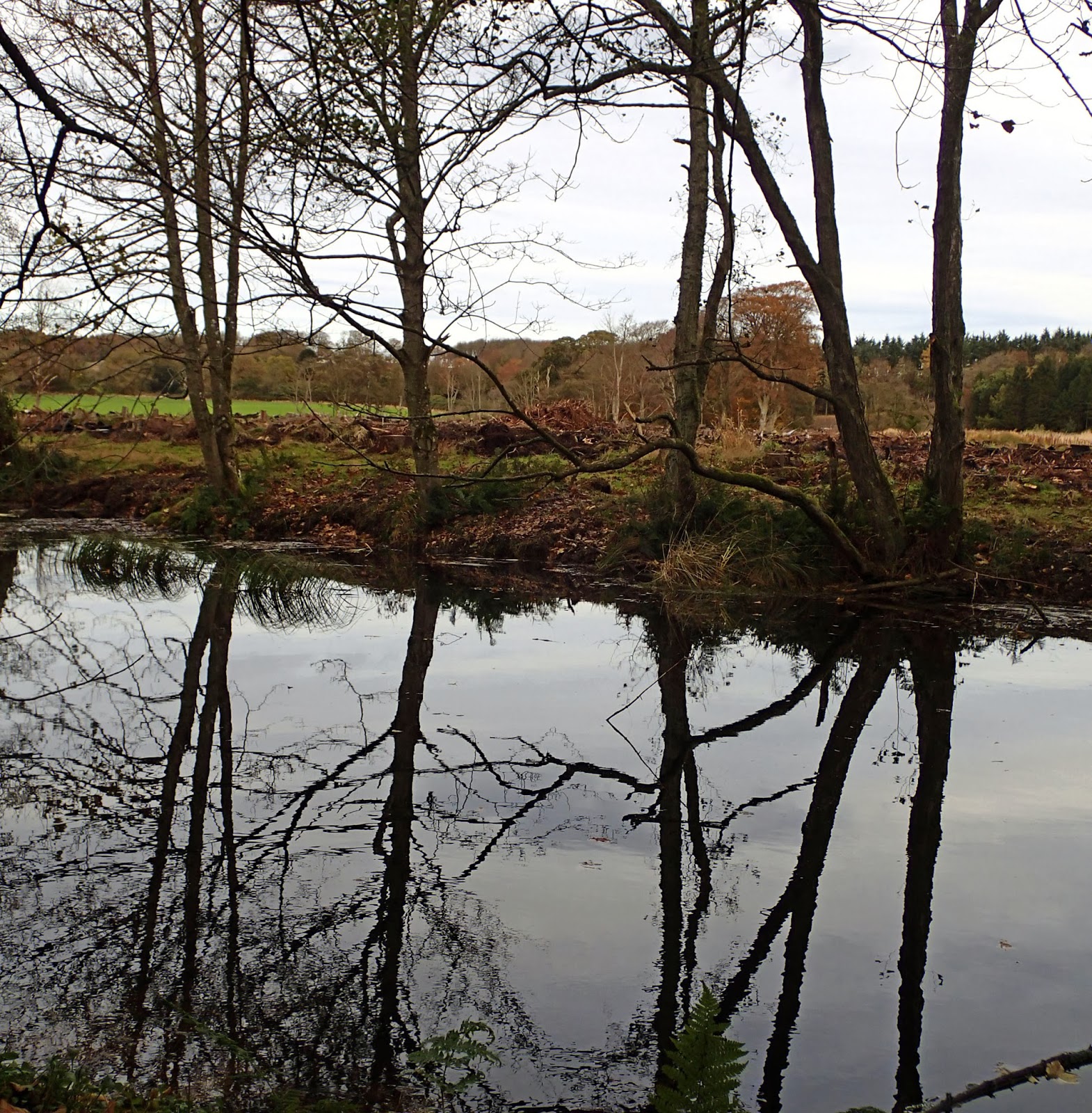 |
| Cairn on the trackbed at the west end of Mintlaw Station commemorating the signing of the agreement between Grampian Regional Council and Buchan Countryside Group which facilitated the creation of the Formartine Buchan Way by David Bellamy in 1987. |
 |
| The signpost by the now defunct bridge which, before realignment carried the A950 over the Line, directs the walker to Pitfour |
 |
| The three elegant spans of the North Bridge reflected in the lake. The artificial lake was dug in the early 19th century and covers an area of nearly 50 acres, three bridges of which the north bridge is by far the grandest, carried the driveway to the house over the lake. The square Grecian design in the panels on the bridge also occur on the stables and the 'Temple of Theseus' which overlooks the lake. |
 |
| Pitfour Stables, a listed building very obviously 'at risk' |
 |
| 'Is there honey still for tea?' Though still imposing the stables are now horribly dilapidated but once must have been magnificent. The central carriage arch was surmounted by a wooden clock tower, the clock is still in place but the top portion and copper cupola which capped the tower and contained a bell have been removed and lie amidst rubble in the yard. Pitfour House, the last of 3 mansions of that name, each larger than its predecessor, was situated in front of the stables was demolished around 1926 when the estate was broken up to pay death duties. The stone from the mansion was used to build Aberdeen council houses. Pitfour Chapel Recent tree felling means that, like the stables, the chapel suddenly appears on the skyline as one walks north through the estate. The chapel, now a private house, was built in 1851 by George Ferguson, 5th Laird who was embroiled in a quarrel with the Episcopal congregation over the repair or replacement of their existing chapel at Waulkmill. The congregation at this time built St Drostan's in Old Deer on land made available to them by Mr Russell of Aden. In a fit of pique Ferguson built a private chapel on a hillock to the west of the house. The chapel was almost the same size as St Drostan's and had a bold, battlemented tower about 20 metres high.Twenty years after it was built the chapel required extensive renovation but remained ill ventilated and damp and fell out of use around 1876: an expensive face saving folly. It is said that on Sundays the estate workers and staff processed to the chapel followed by the Ferguson family, the choir dressed in surplices and then the priest. |
 |
| Taitswell, the Pitfour factors house near the East Lodge, seen from the Line close to the footpath leading to Pitfour. Most notable of the factors to live at Taitswell was James Mitchel who served the estate in a variety of capacities for forty-eight years from 1790 until his death in 1838. Mitchel served the Ferguson's loyally and with great integrity he was popular and rspected not only on the estate but also in the local community with which he was actively involved. When he died he left a considerable estate a substantial part of which was set aside to establish and finance girls' schools locally in Fetterangus, Rora, Mintlaw and Maud and in his home town of Banff. The remainder of his estate was an endowment,still in existence, known as the Mitchel Bequest for the benefit of old men and widows on the Pitfour Estate. He is commemorated by the street named after him in Mintlaw: James Mitchel Place. |






No comments:
Post a Comment